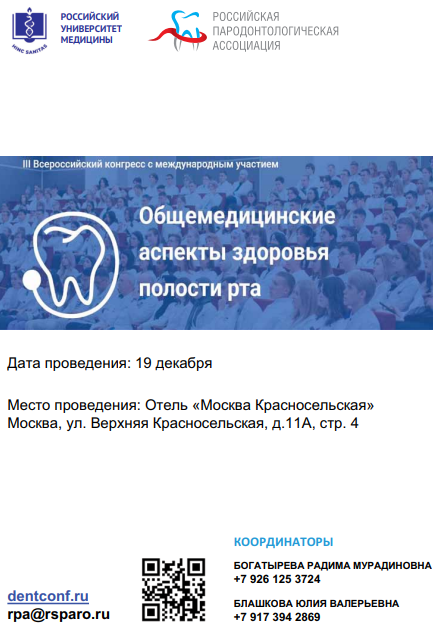Comet assay–based risk prediction of cleft lip and palate during preconception planning in women residing in areas with environmental toxicants
https://doi.org/10.33925/1683-3031-2025-892
Abstract
Relevance. The alkaline comet assay is among the most sensitive methods for detecting genotoxic effects in diverse tissues and body fluids. It quantifies the migration of fragmented chromosomal DNA in an electric field; the extent of migration correlates with the degree of DNA damage.
Materials and methods. The study was conducted at the Republican Children’s Clinical Hospital (Ufa, Russian Federation). Five groups were compared: (1) 40 children with cleft lip and palate (CLP) living in an area without environmental toxicants; (2) 60 children with CLP living in an area with environmental toxicants; (3) 40 mothers residing in an area without environmental toxicants; (4) 60 mothers residing in an area with environmental toxicants; and (5) 40 apparently healthy children to establish reference values. Peripheral blood lymphocytes were evaluated using the alkaline comet assay. Gels were stained with SYBR Green I. Statistical analyses were performed in R (version 4.x) using the stats package.
Results. Among children with CLP residing in areas with environmental toxicants, the mean tail length measured 11.473 µm (95% CI, 11.411–11.535), % tail DNA averaged 7.816 (95% CI, 7.768–7.865), and the tail moment amounted to 0.897 (95% CI, 0.886–0.907). In mothers from the same areas, the mean tail length reached 11.403 µm (95% CI, 11.336–11.470), % tail DNA averaged 6.662 (95% CI, 6.628–6.697), and the tail moment was estimated at 0.760 (95% CI, 0.754–0.766).
Conclusion. Use of the alkaline comet assay during preconception planning in women residing in regions with environmental toxicant contamination provides significant clinical utility for risk prediction of CLP in offspring. Thresholds of tail length ≥ 11.0 µm, % tail DNA ≥ 6.5, and tail moment ≥ 0.73 are associated with a markedly increased predicted risk of cleft lip and palate in the offspring.
About the Authors
O. S. ChuikinRussian Federation
Oleg S. Chuikin, DMD, PhD, Associate Professor, Associate Professor, Department of the Pediatric Dentistry and Orthodontics
3 Lenina Str., Ufa, Russian Federation, 450008
V. N. Pavlov
Russian Federation
Valentin N. Pavlov, MD, PhD, DSc, Professor, Rector, Head of the Department of Urology
Ufa
D. O. Karimov
Russian Federation
Denis O. Karimov, PhD, Head of the Toxicology and Genetics Department with the Experimental Clinic of Laboratory Animals
Ufa
D. D. Karimov
Russian Federation
Denis D. Karimov, PhD, Senior Researcher, Toxicology and Genetics Department with the Experimental Clinic of Laboratory Animals
Ufa
K. N. Kuchuk
Russian Federation
Kristina N. Kuchuk, DDS, Assistant Professor, Associate Professor, Department of the Pediatric Dentistry and Orthodontics
Ufa
References
1. Perin J, Mai CT, De Costa A, Strong K, Diaz T, Blencowe H, et al. Systematic estimates of the global, regional and national under-5 mortality burden attributable to birth defects in 2000-2019: a summary of findings from the 2020 WHO estimates. BMJ Open. 2023;13(1):e067033. https://doi.org/10.1136/bmjopen-2022-067033
2. Saveliev V.V., Vinokurov M.M., Kershengolts B.M. Prediktory significance of DNA damage to mononuclear blood cells in early diagnostics of infected pacreatic necrosis. Grekov's Bulletin of Surgery. 2018;177(1):25-30 (In Russ.). https://doi.org/10.24884/0042-4625-2018-177-1-25-30
3. Chuykin O.S., Davletshin N.A., Bilak A.G., Kuchuk K.N. Predictors of congenital cleft lip and palate in children in a region of environmental disadvantage. Actual problems in dentistry. 2024;20(3):139-144 (In Russ.). https://doi.org/10.18481/2077-7566-2024-20-3-139-144
4. Antonova I.V., Bogacheva E.V., Kitayeva Yu.Yu. Role of exogenous factors in malformations forming. Humane ecology. 2010;(6):30-35 (In Russ.). Available from: https://cyberleninka.ru/article/n/rol-ekzogennyh-faktorov-v-formirovanii-vrozhdennyh-porokov-razvitiya-obzor
5. Kucharova M, Hronek M, Rybakova K, Zadak Z, Stetina R, Joskova V, Patkova A. Comet assay and its use for evaluating oxidative DNA damage in some pathological states. Physiol Res. 2019;68(1):1-15. https://doi.org/10.33549/physiolres.933901
6. Langie SA, Koppen G, Desaulniers D, Al-Mulla F, Al-Temaimi R, Amedei A, et al. Causes of genome instability: the effect of low dose chemical exposures in modern society. Carcinogenesis. 2015;36 Suppl 1(Suppl 1):S61-88. https://doi.org/10.1093/carcin/bgv031
7. Artyukhov V.G., Trubitsyna M.S., Nakvasina M.A., Solov'eva E.V. DNA fragmentation of human lymphocytes in dynamics of development of apoptosis induced by action of uv radiation and reactive oxygen species. Cell and Tissue Biology. 2011;5(2):127-135 (In Russ.). Available from: https://www.elibrary.ru/item.asp?id=16500374
8. Swer RT, D'Silva MH, Datta D. Estimation of DNA damage in non syndromic congenital skeletal malformations using comet assay. National Journal of Basic Medical Sciences. 2016;4(1):1-6. Available from: https://www.researchgate.net/publication/358425993_Non_Syndromic_Congenital_Skeletal_Malformations
9. Vidya G, Suma HY, Vishnu Bhat B, Parkash Chand, Ramachandra Rao K, Harichandrakumar KT. Estimation of DNA damage through Comet Assay in children with Con-genital Heart Disease – Case-control study. Current Pediatric Research. 2014;18(1):1-4. Available from: https://www.researchgate.net/publication/262107682_Estimation_of_DNA_damage_through_Comet_Assay_in_children_with_Con-genital_Heart_Disease_-_Case-control_study
10. Filippov E.V. Using the "DNA comet" method to detect and assess the degree of DNA damage to plant, animal and human cells caused by environmental factors. Nauka i obrazovanie. 2014;(2):72-78 (In Russ.). Available from: https://www.elibrary.ru/item.asp?id=22309402
11. Karbaschi M, Ji Y, Abdulwahed AMS, Alohaly A, Bedoya JF, Burke SL, et al Evaluation of the Major Steps in the Conventional Protocol for the Alkaline Comet Assay. Int J Mol Sci. 2019;20(23):6072. https://doi.org/10.3390/ijms20236072
12. Møller P. The comet assay: ready for 30 more years. Mutagenesis. 2018;33(1):1-7. https://doi.org/10.1093/mutage/gex046
13. Azqueta A, Ladeira C, Giovannelli L, Boutet-Robinet E, Bonassi S, Neri M, et al. Application of the comet assay in human biomonitoring: An hCOMET perspective. Mutat Res Rev Mutat Res. 2020;783:108288. https://doi.org/10.1016/j.mrrev.2019.108288
14. Susai S, Chand P, Ballambattu VB, Hanumanthappa N, Veeramani R. DNA Damage Analysis in Children with Non-syndromic Developmental Delay by Comet Assay. J Clin Diagn Res. 2016;10(5):AC06-AC8. https://doi.org/10.7860/JCDR/2016/19578.7806
Supplementary files
Review
For citations:
Chuikin O.S., Pavlov V.N., Karimov D.O., Karimov D.D., Kuchuk K.N. Comet assay–based risk prediction of cleft lip and palate during preconception planning in women residing in areas with environmental toxicants. Pediatric dentistry and dental prophylaxis. 2025;25(2). (In Russ.) https://doi.org/10.33925/1683-3031-2025-892





































